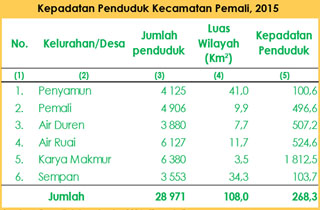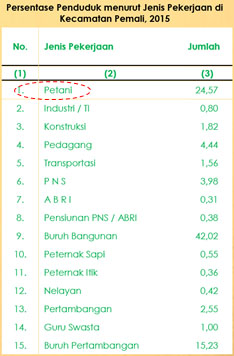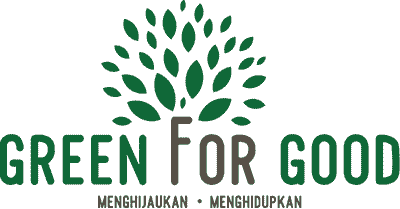Sustainability
CSR Program
Social Mapping
Social Mapping is a systematic process of community representation and involves collecting data and information about the community including the profile and social problems that exist in the community.
Social mapping benefits the interests of a company or an institution for :
- Understand the Characteristics of the community to be nurtured
- Know the potential and problems of the target community
- Knowing the needs of the community
- As the basis for determining the program to be effective.
Social mapping can actually be done by anyone, as long as know what data will be searched and how to look for it, as well as the ability to communicate and dig data in the field. In general can be done by internal company personnel or by external parties such as Academics, NGOs, Research Institutions.
PT. Refined Bangka Tin tries to focus on developing communities in the area around the plant and mine to be effective. The areas to be cultivated are Sungailiat and Pemali sub-districts (Desa Penyamun).
Social Mapping in Sungailiat Sub-district
Tin Smelter Factory PT. Refined Bangka Tin operates in Jelitik Industrial Estate, Sungailiat Sub-district, Bangka Regency, Bangka Belitung Province.
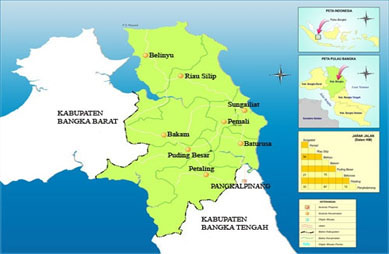
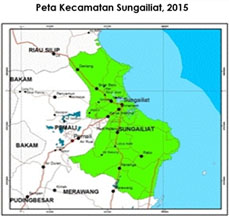
Sungailiat District covers 4.28 percent of Bangka regency with the largest area owned by Kenanga Village. While the smallest area owned by the village of Sri Menanti. As in other areas of Bangka Island, the land in Sungailiat Sub-district contains lead ore minerals and other minerals such as kaolin, quartz sand, clay, and mountain rocks.
Sungailiat Sub-district consists of 13 villages and sub-districts where there are 6 sub-districts of 7 existing villages / kelurahan. There are three sub-districts that experienced expansion namely Parit Padang village which blossomed into Parit Padang, Lubuk Kelik, Bukit Betung Surya Timur and some Roads; Sinar Baru breaks into Sinar Baru, Matras and Sinar Jaya Jelutung; and Sungailiat urban village broke into a part of Ticket.
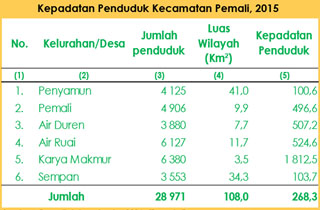
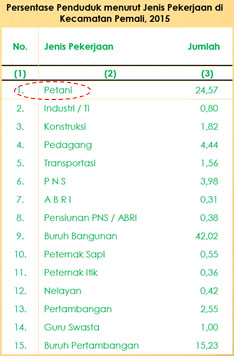
Employment indicators are important indicators that have always been the concern of many parties, especially the government. Population growth followed by an increase in the unabsorbed workforce can lead to social problems known as unemployment. According to Sungailiat District office data, there are 11,471 people who have livelihoods in the industry by 2015. Sungailiat Sub-district is quite a lot of big/medium industries engaged in tin processing or home industry processing processed foods such as crackers and kemplang. The second largest type of work is building laborers, carrying 8,233 people and also traders as many as 7,943 residents.
Besides the industry and construction workers, many also have livelihoods of fishermen of 6,334 people. This is due to the Sungailiat region which is directly adjacent to the sea makes the fishermen become one option to meet the needs of life. It is not wrong if Sungailiat Subdistrict is also a sub-district that has fishery potential.
FISHERY IN BANGKA REGENCY
Bangka Regency is geographically most of its territory is bordered by the sea, among others: the north bordering Natuna sea; and the East is bordered by the South China Sea. Bangka Regency is a long coastal area surrounded by small islands. In addition to having extensive marine waters, Bangka Regency also has brackish waters, swamps, rivers and under (excavation of tin), which has considerable fisheries potential and prospective if managed and utilized properly.
Fishery sub-sector, especially marine fishery is very dominant in Bangka regency considering Bangka Island is surrounded by sea and borders with South China Sea which has relatively big marine resources to be developed. In addition to the potential of marine fisheries in the district of Bangka is also potential for the development of marine aquaculture, among others, for commodities snapper, grouper, and seaweed. Marine fishery commodities that have significant economic value in Bangka Regency are Kerapu, Kakap Merah, Shrimp, Squid, Shellfish, Shark Fins, Pari, Tenggiri, Tongkol etc. Sea Peanran Bangka Regency also holds non fish potentials for the development of marine tourism and valuable objects of cargo of sinking ships and offshore mining.
SEA AND WATER FISH
The total production and value of fish catches in 2015 is 26,005.42 tons of production amount, and 572,119,240 (thousand) rupiahs of catch value. The amount of fish production and value of 477.80 tons and 22,193,710 (thousand) rupiahs of fish cultivation value increased compared to the previous year.
Potential of terrestrial fishery is also not less, both capture fishery and cultivation. Rivers, Swamps and Kolong have potential for fisheries development. Commonly caught fishery commodities from these waters and is a consumption fish for local people but has economic value is fish Cork, Baung, Galah shrimp, local catfish, Belida, etc.. The fish are also potential to be cultivated. While the fish consumption that has been cultivated in ponds and ponds include catfish, catfish, gurami, indigo, mujair, pomfret, mas, baung etc.. In addition to the fish ponds can also be cultivated in floating net cages in the river and under.
Besides fish consumption, Bangka Regency also has potential for ornamental fish development considering the location of Bangka Regency close to Asian fish market and easy transportation access to Jakarta and Sumatera. , Black Ghost, Lobster fresh water, etc..
Brackish waters covering an area of 82,274 ha have potential for the development of brackish water cultivation, among others for the cultivation of tiger shrimp, vanameii, white snapper and tilapia. The number of fishery products contributed to the development of fishery processing industry in Bangka Regency. Some of the famous fishery products from Bangka Regency include: shrimp paste, fish crackers, shrimp crackers, squid egg crackers (kricu), brittle, empek-empek, fish brains and so on.
Based on the above conditions and also the condition of Factory location which is very near / directly adjacent to the sea and with Kampung Nelayan Jelitik, it has been since 2007 PT. Refined Bangka Tin takes a social approach to the surrounding community by providing useful assistance. And to make it easier to coordinate in the field than with the head of the environment also in cooperation with local NGOs namely NGO HNSI (Fishermen Association of Indonesia) Bangka District.
From the results of discussions with NGOs HNSI and Fishermen around, then starting in 2015 PT. Refined Bangka Tin makes the Tilapia Fish Cultivation Program as an additional income for fishermen if they can not go to sea due to weather conditions and lack of land and others. As a first step PT. Refined Bangka Tin donated Rp. 30 million to the HNSI NGO.
Mentoring program was halted in 2016 due to the condition of PT. Refined Bangka Tin which ceased operations and changed ownership. The year 2017 is planned to be continued and improved.
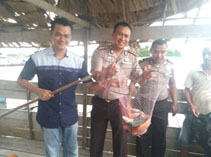
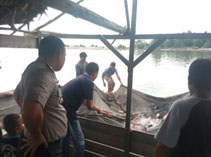
Social Mapping in Kecamatan Pemali (Desa Penyamun)
Tin Mine Land PT. Refined Bangka Tin operates in Penyamun Village, Pemali Subdistrict, Bangka Regency, Bangka Belitung Province.
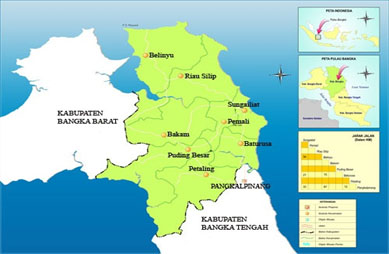
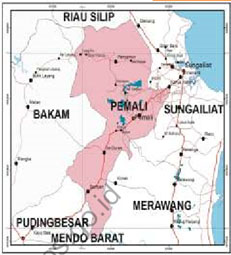
Pemali sub-district has six villages consisting of Pemamun, Pemali, Air Duren, Air Ruai, Karya Makmur, and Sempan. The village is headed by a village head who appoints him through the election of the village head (PILKADES). In 2015, there are 6 village heads in Kecamatan Pemali and 22 sub-villages, 71 census blocks, 108 neighborhood units. Where the village that has the most administrative area is Water Ruai Village with a total of 5 hamlets and 25 Rukun Tetangga. The amount of development fund aid received by Pemali sub-district in 2015 reached 6 276.1 million rupiah. Development funding assistance consists of APBN funds from central government, APBD I from provincial government and Village Fund Allocation (ADD). Development budget funding from the central government (APBN) is only in 2015. Karya Makmur village receives the most development assistance amounting to 1 089.6 million rupiah while the smallest allocated to the Village Sempan.
Pemali sub-district has a lot of agricultural land, especially in the plantation sector such as rubber, pepper and oil palm. According to data from the Pemali District office, there are 24.57 percent of people who have livelihoods as farmers. While 42.02 percent have livelihoods as Building Workers. In addition, there are 15.23 residents with Mining Workers livelihoods.
Being a workforce is one of the social demands of society to get their needs. Labor becomes an important indicator in the economy of a region that is not only seen in terms of quantity but also quality. Improved quality will not only provide a higher price of payments but will also improve the life of the community for the better.
